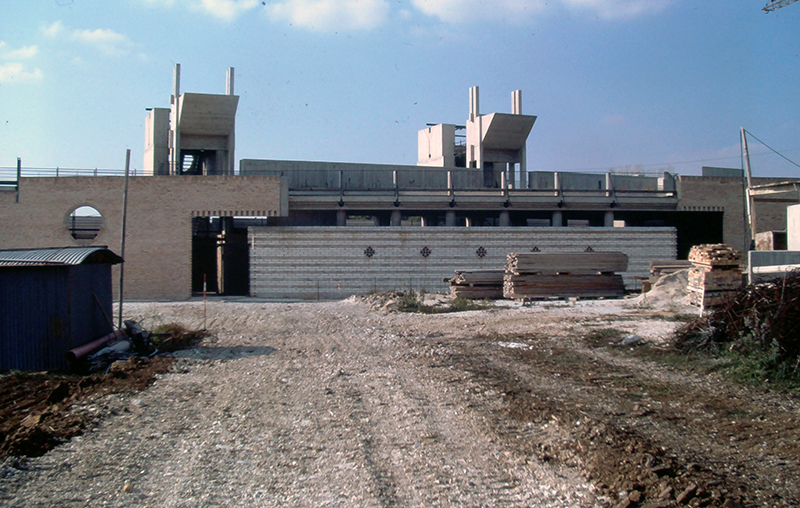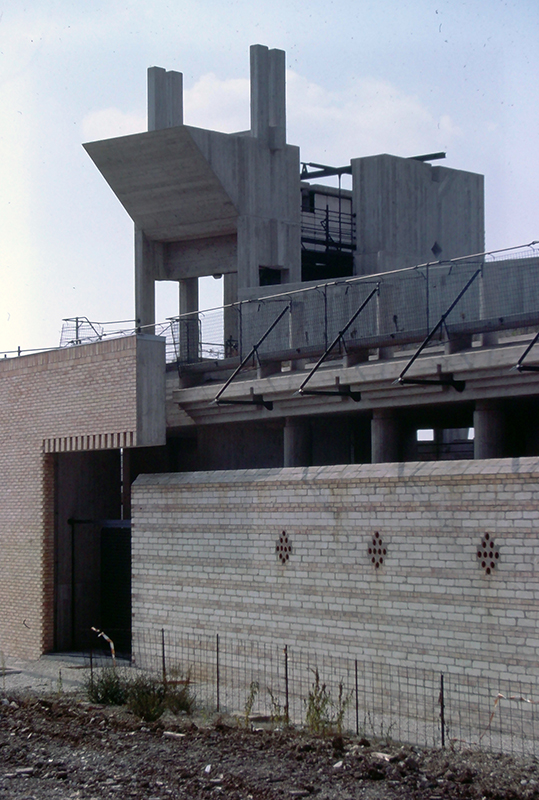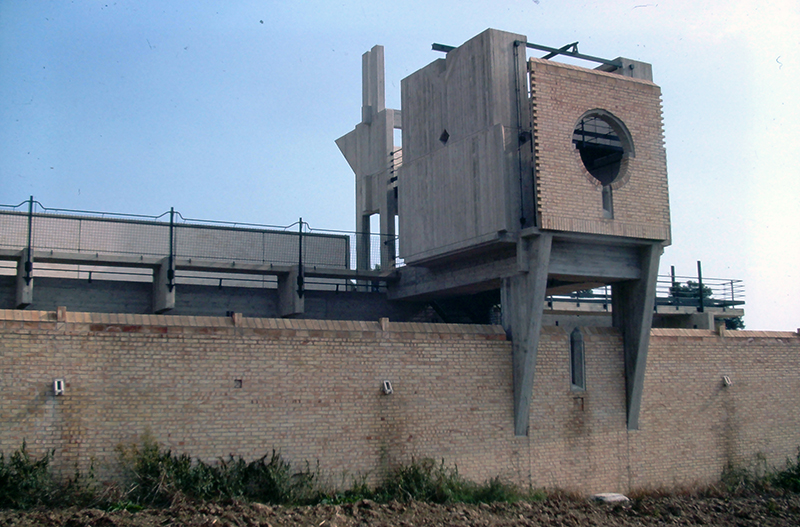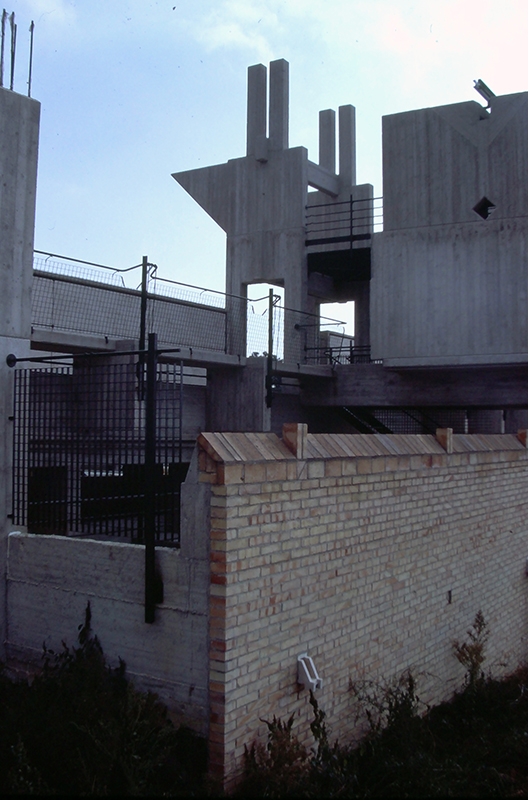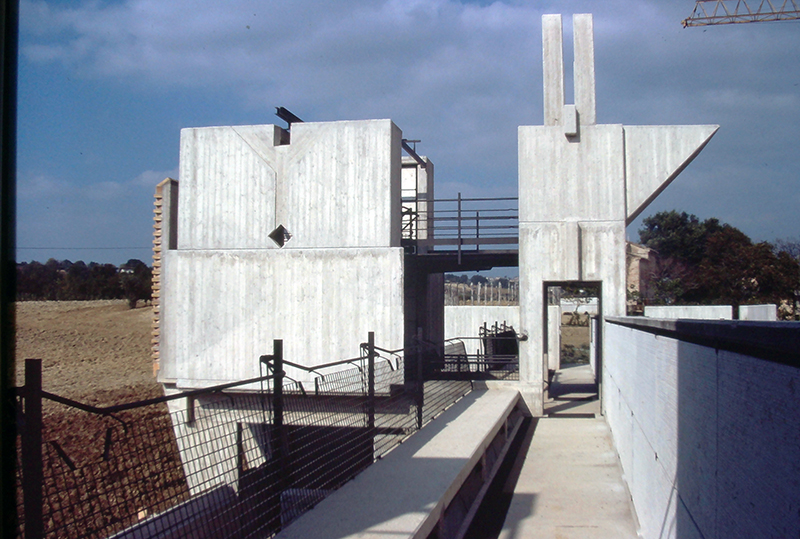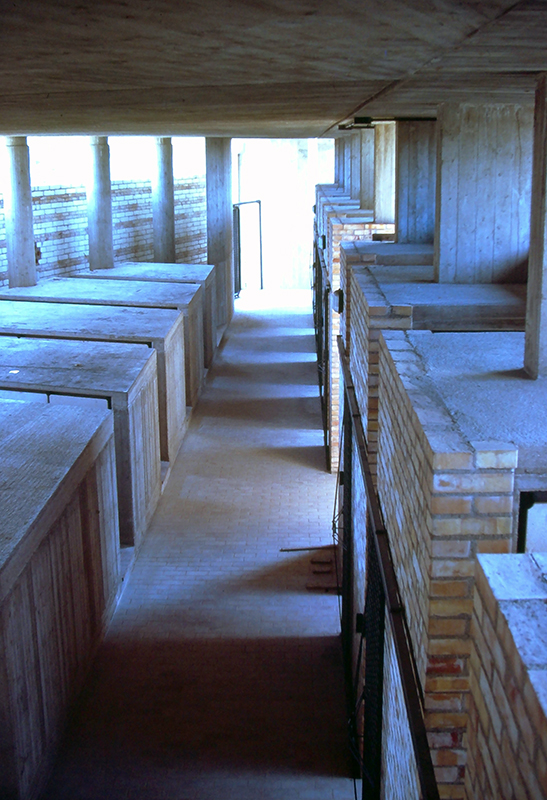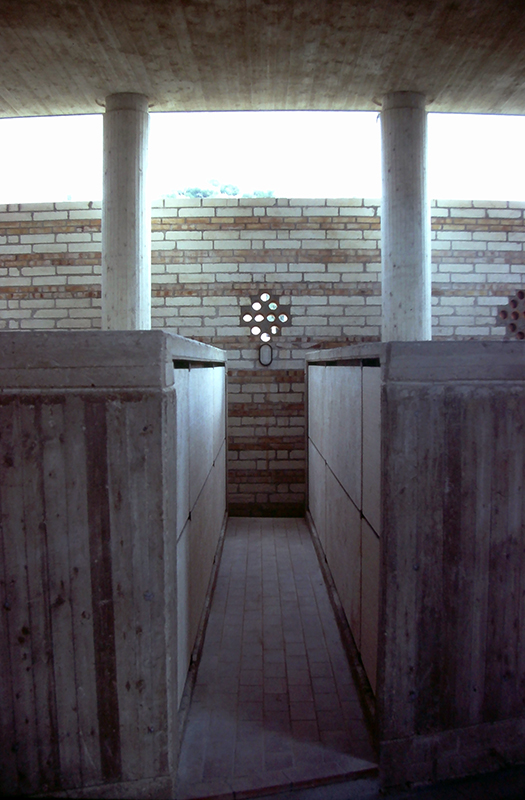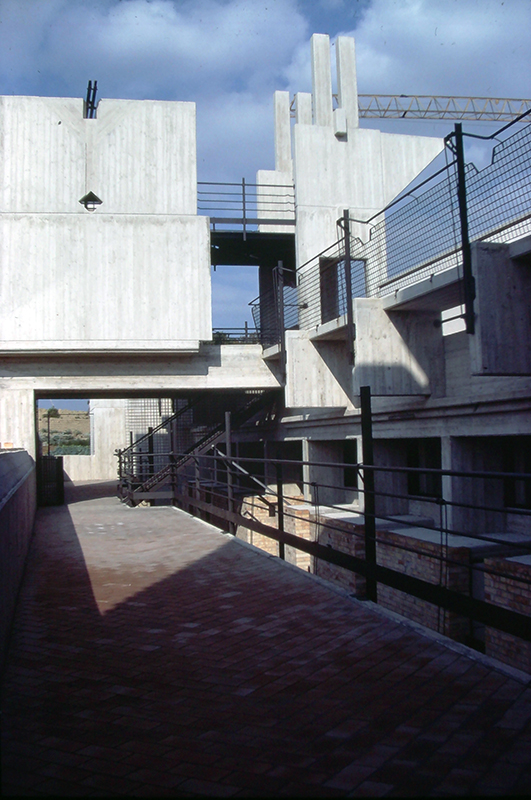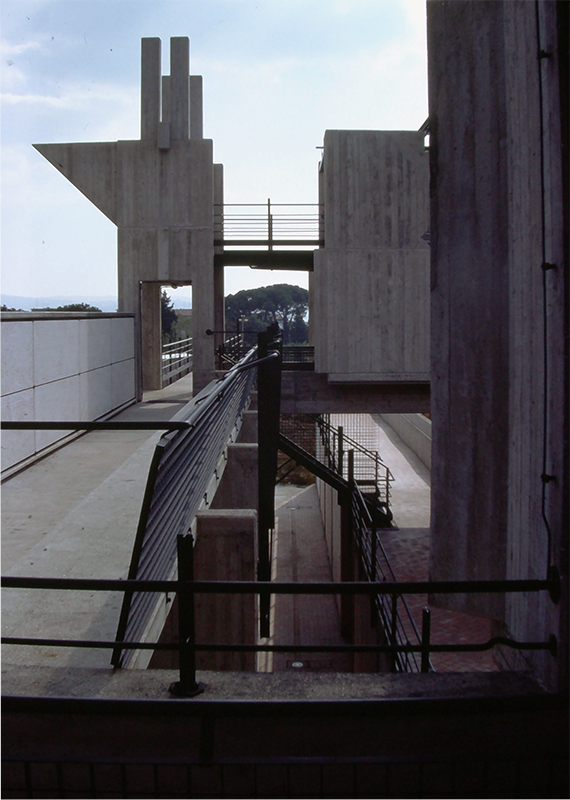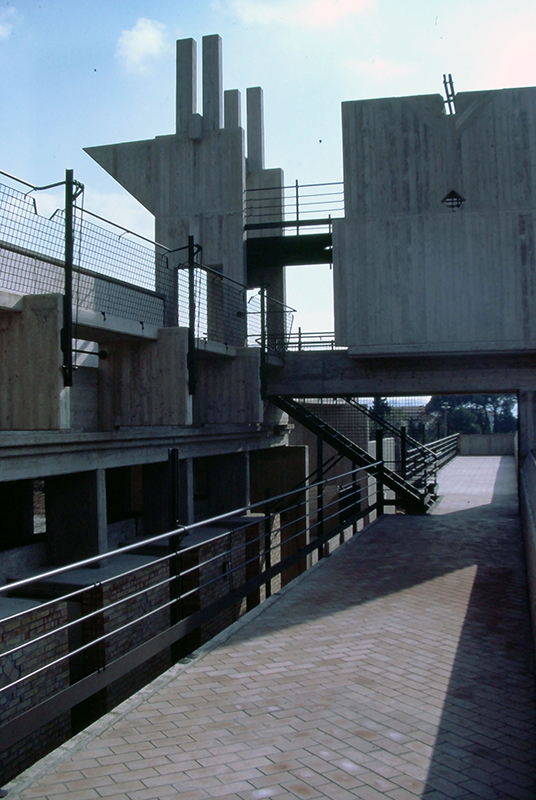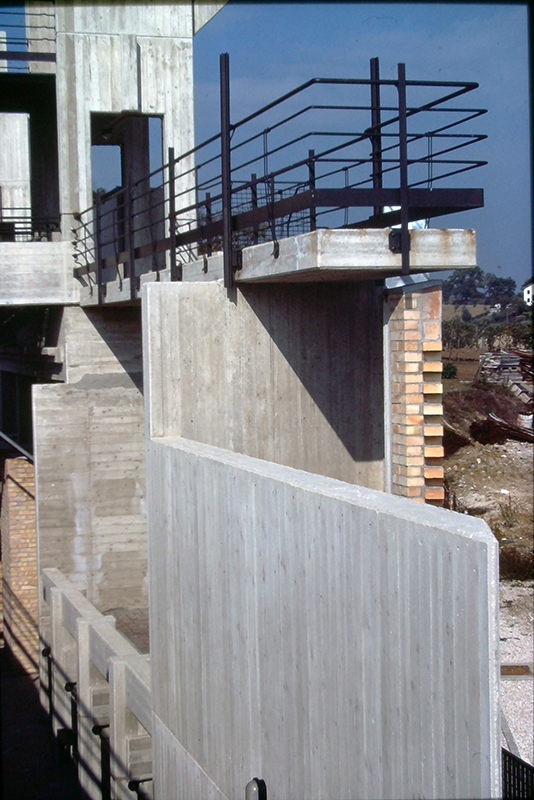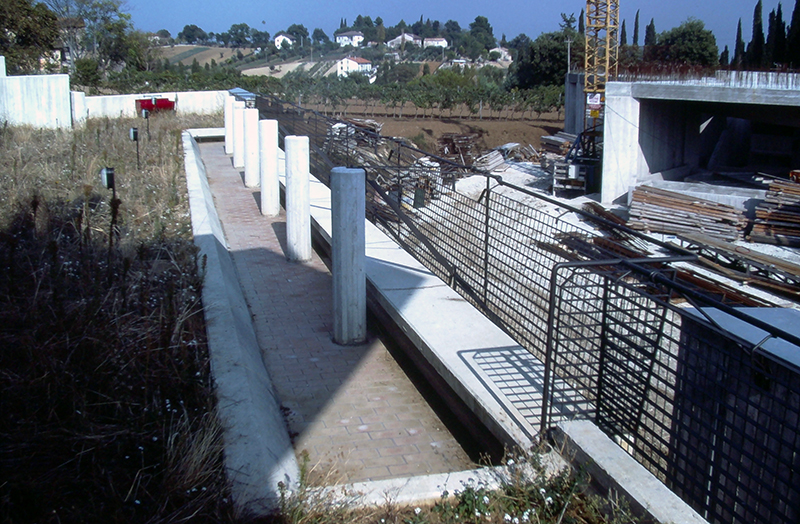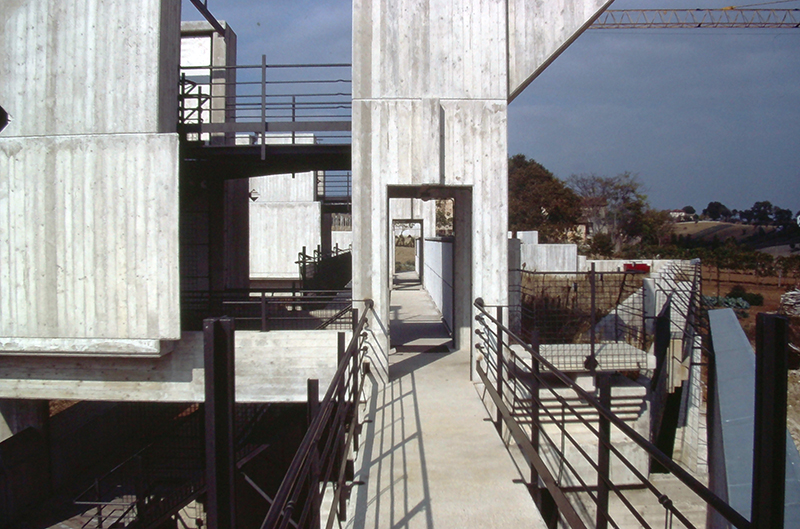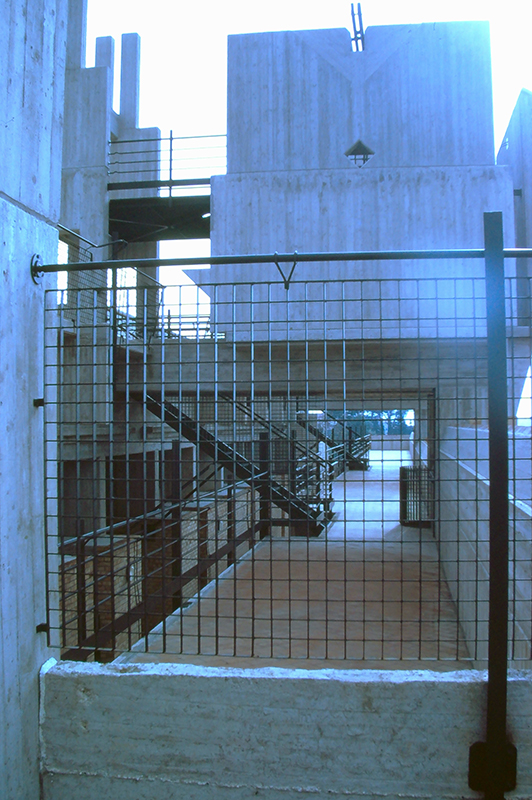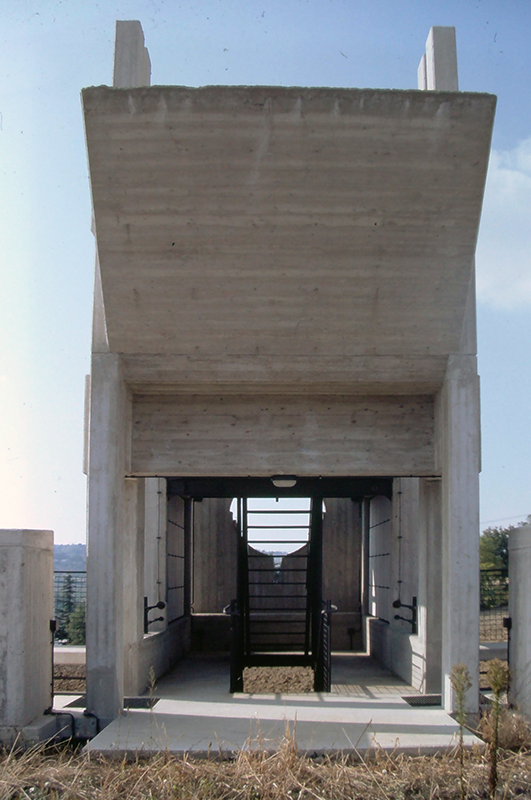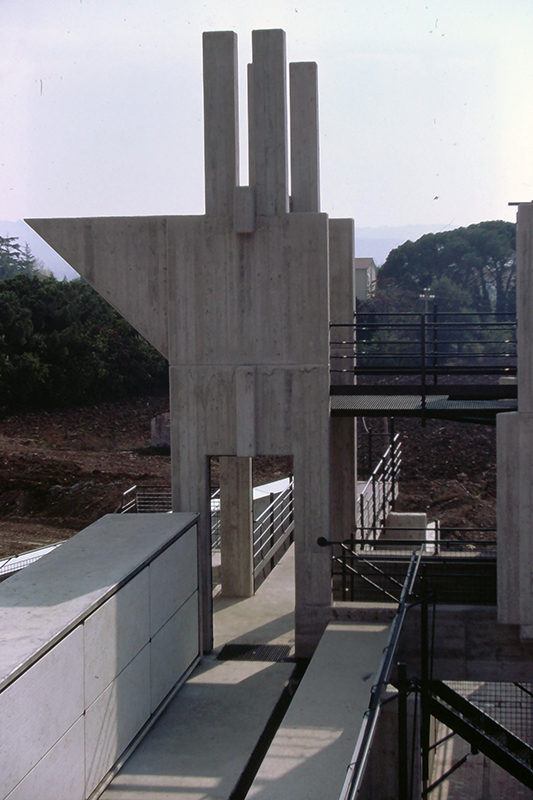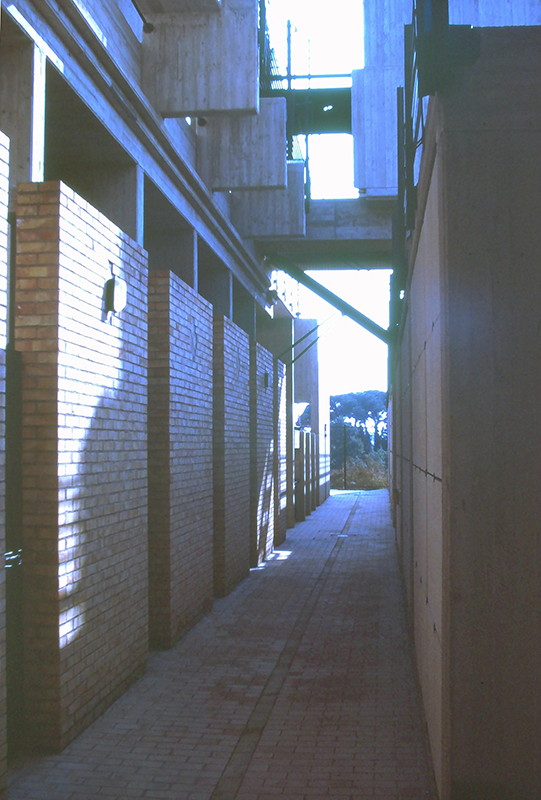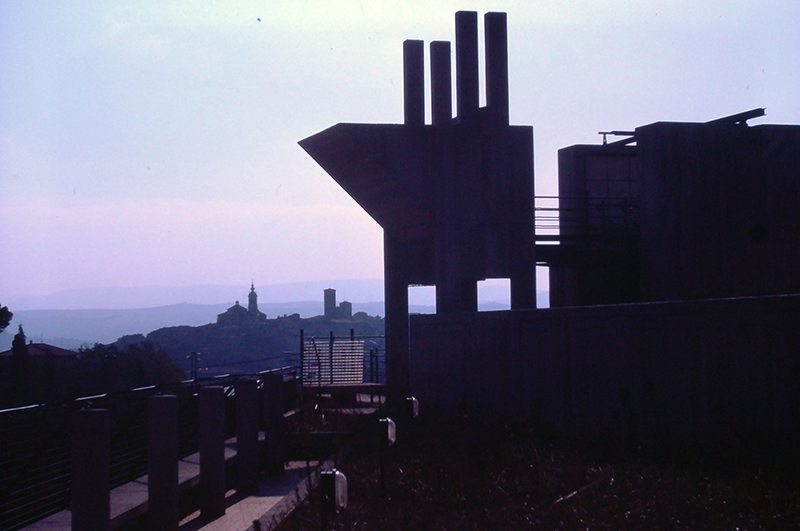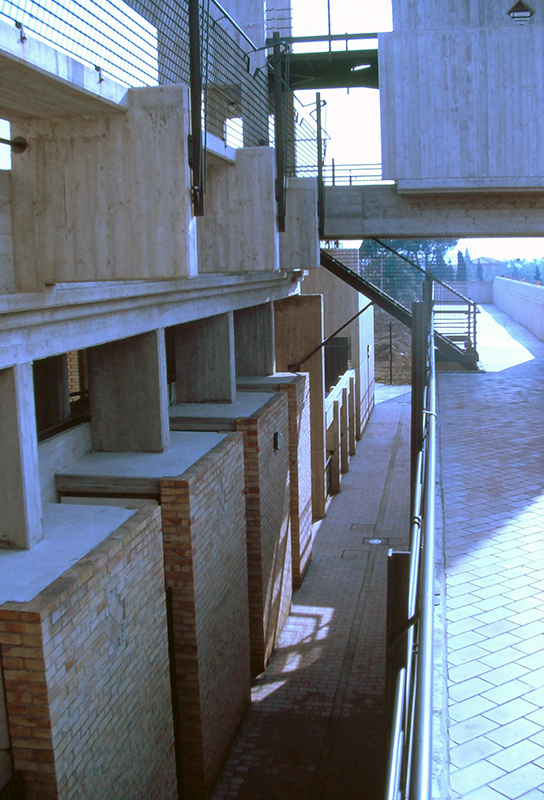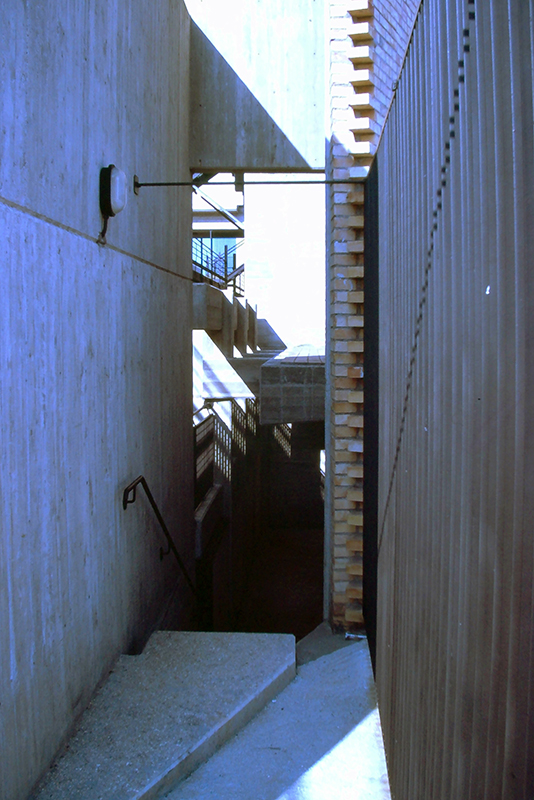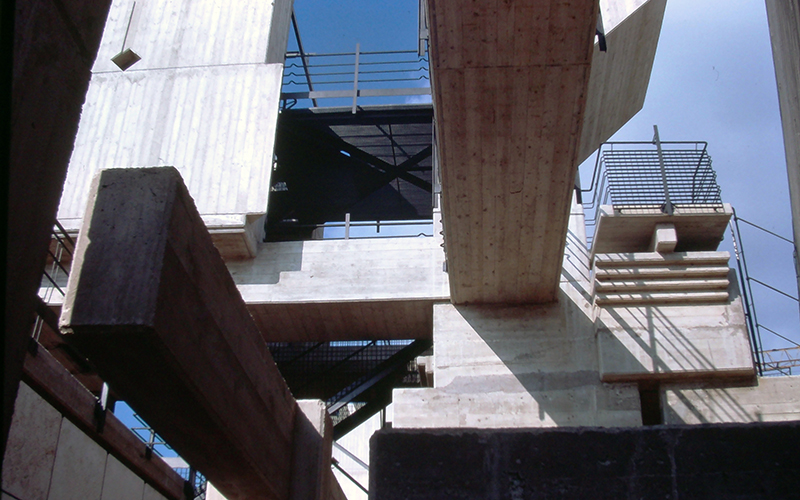
Leonardo Ricci: Jesi Cemetery. The photographs below were taken in 1982 during the construction of the new Jesi Cemetery, which was an addition to the existing city cemetery north of the historic center. Designed by Florentine architect, and a member of the Florence School, Leonardo Ricci (1984-1994) was a colleague of mine at the School of Architecture, University of Kentucky in the 1990s. Much of Leo’s work remains unbuilt and is visionary in its own right. Specifically, I am thinking of his two competition entries in the 1995 Venice Biennale: the extension of the Peggy Guggenheim Museum, and the reconstruction of the Academia Bridge. Ricci was a pupil of architect Giovanni Michelucci and worked with Leonardo Savioli.
Peggy Guggenheim Museum proposal. Composition below is part of the author’s research to catalogue unbuilt projects; in particular those proposed in cities around the world. This one is part of the Venice series.
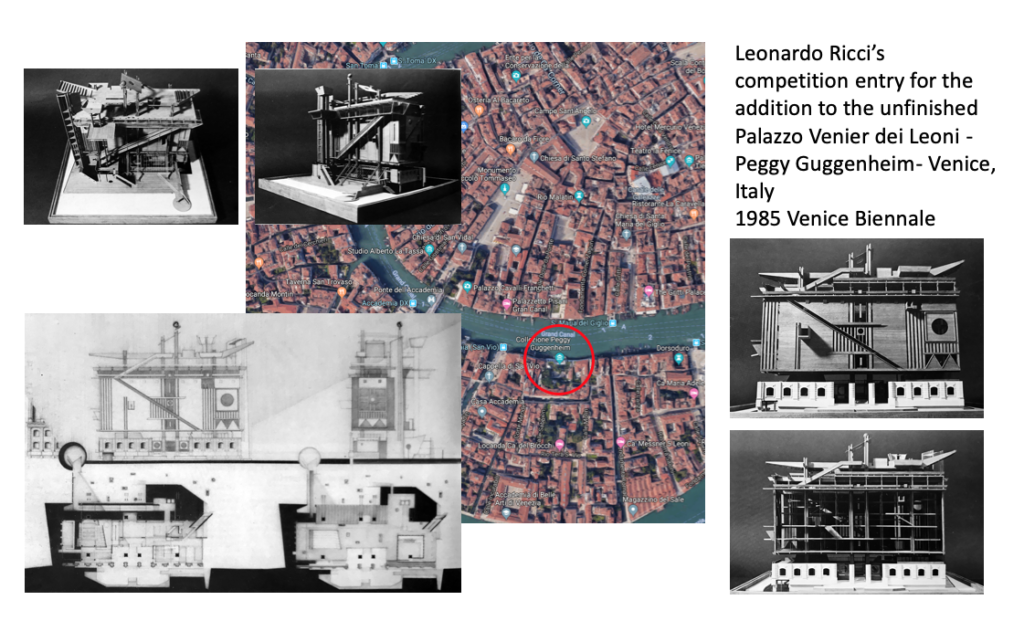
Writer, painter, and architect, Leo will leave many legacies for future generations, perhaps the most important is his 1962 book Anonymous 20th Century which remains a seminal essay on his existential view of architecture and the state of society.
Leonardo Ricci one of Europe’s great younger architects, presents a moving testament of faith in the future of mankind. ANONYMOUS (20TH CENTURY) signals and salutes the new class of men who will once day arise, uniting technological power to the humanitarian spirit. They will create a sort of anonymous millennium, an egalitarian society only of peers in which both psychological strife are absent and the fruits of earth and of th soul blossom for … Ricci’s book is a journey in the imagination, a book, as the author says, without end and with our conclusion, an apolitical vision designed to inspire the reader. It’s an exhortation more than welcome in this anxious age.
Virginia Kirkus
His wife Maria Grazia Dallerba Ricci, fondly called Pucci (1936-2021) was instrumental in many of Leo’s projects and was a visionary in her own right. The following essay titled Poetics and politics of architecture: Stasis or change (1973) is an insight into Pucci’s intellectual and humanistic way of thinking.
Jesi Cemetery, Italy, by Leonardo Ricci
